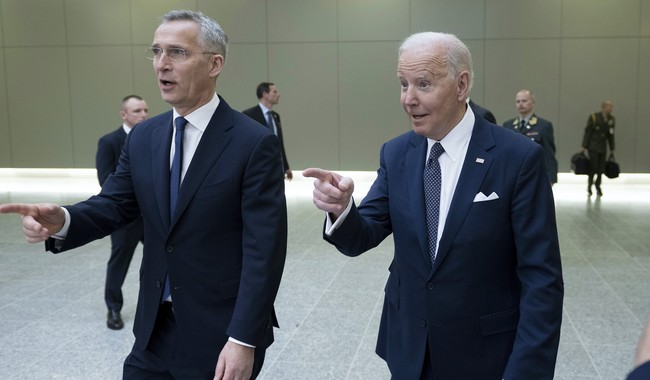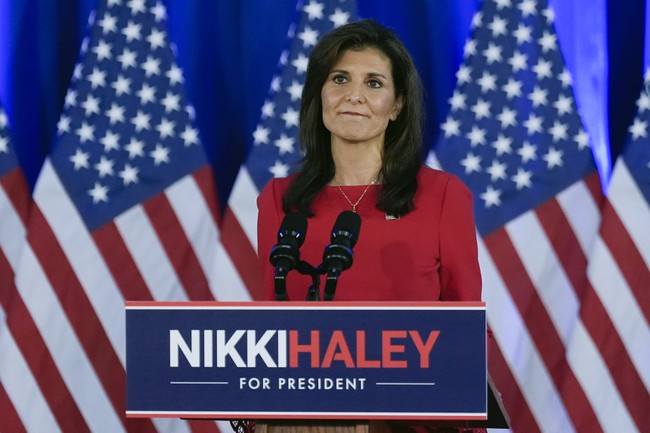
www.theblaze.com
Blaze News original: 10 instances when everyday people stood up to violent carjackers and thwarted their plans
Carjacking victims repeatedly are told to simply surrender their vehicles to the perps — and certainly don't resist or fight back. Those who witness carjackings in progress? The vast majority are going to stay out of harm's way and not intervene.But every now and then, everyday folks go against conventional wisdom — and they fight back and fight for others.'We are proud of these two citizens for their heroic action, for helping our officers make the arrest, and for keeping our community safe.'Just last month, video showed an Amazon delivery driver beating up an alleged wannabe carjacker who punched his female coworker in the face, the New York Post reported.
The paper said the suspect suddenly attacked the 23-year-old female Amazon driver when she was stuck in traffic near one of the company’s warehouses in Jamaica, Queens. The suspect — identified as 29-year-old Kevon Wilson — allegedly punched the female Amazon driver repeatedly, dragged her from the van, and then jumped into the driver’s seat, the Post noted, citing police sources.But the victim grabbed the keys out of the ignition as her male coworker entered the fray and was seen on video repeatedly punching the suspect in the middle of the road, the paper said. When the mini-brawl ended, the suspect actually got back into the driver's seat of the Amazon delivery van, the paper added.Wilson later was arrested for robbery and assault, the Post said, adding that sources indicate he's been cuffed numerous times, including for a May 2020 assault, and he also has an open bench warrant for a traffic violation. Wilson had his bond set at $7,500 following his arraignment in Queens Criminal Court, the paper said, adding that he's scheduled back in court next Tuesday. Amazon told the Post the company is investigating the incident.The following are 10 other times when everyday people stood up to violent carjackers and thwarted their plans.Pair of citizens help capture career criminal; wild police bodycam video shows one of them thwart crook's carjacking attemptPolice in Ocala, Florida, said on the morning of Oct. 24, 2023, 39-year-old Michael Prouty forced his way into a woman's home in the Villages and stole her purse, cell phone, and car from the garage. Prouty later was driving the stolen car in Ocala, fled from police who spotted him, crashed into several vehicles — which left multiple people injured — and ran off. Police said "heroic citizen" Tom Episcopo grabbed Prouty, who got away but was slowed down. Police said Prouty then tried to carjack a woman while she was in a Starbucks drive-thru, but another "heroic citizen," Shane Spicer, intervened and tried to pull Prouty out of the vehicle. Bodycam video shows Spicer running after and grabbing and holding Prouty, after which officers took over and arrested him.Prouty was facing multiple charges, including fleeing and eluding and attempted carjacking, police said, adding that Prouty also was involved in an early-morning robbery of an Ocala 7-Eleven hours before the home invasion. Police added that Prouty was sent to prison in 2017 after being charged with burglary and robbery and was released in July 2022, after which he committed more felony crimes in Miami-Dade County. Police said Prouty returned to prison and was again released in February 2023. Police said he was turned over to Miami-Dade jail and bonded out in March 2023.Police formally recognized Episcopo and Spicer on Feb. 13 for their actions. “We are proud of these two citizens for their heroic action, for helping our officers make the arrest, and for keeping our community safe," Ocala Police Chief Mike Balken said at the time of the incident.Philly public bus driver hailed as 'Batman' for barreling toward carjackers who were trying to take woman's vehicle while he was on his route, scaring them awayChris DeShields, a bus driver for the Southeastern Pennsylvania Transportation Authority, was driving north on Frankford Avenue in the city's Fishtown neighborhood not long before midnight on Jan. 25, 2023, when he said he saw a trio of 20-something males surrounding a young woman they’d forced out of a car, the Philadelphia Inquirer reported, adding that one of them snatched her keys.DeShields was carrying five passengers at the time, the paper said, citing Chris Valentin, chief bus operations officer for the agency. But DeShields wasn't about to let the crooks get away with it. The Inquirer said DeShields veered the bus toward the trio, leaned on the horn, flashed the blinkers, and shouted out the windows.“They had masks on, but you could see their eyes popping wide open,” DeShields, who's been driving buses for 17 years, told the paper. “Like, ‘What do we do now?’” With a 30,000-pound bus heading toward them, the Inquirer reported that the trio ran off.DeShields told the paper he exited the bus to ask people in a bar to watch the woman until she was able to get help — and then he got back inside and continued his route “to get my passengers home.”DeShields — who at the time was 38 and worked a 4:30 p.m. to 2:05 a.m. shift — added to the Inquirer that he "caught hell in the depot the next day. My coworkers were laughing and teasing me, saying, ‘We heard you were Batman.’”“If you were raised a certain way, and you’ve got a bit of heart, you’re going to get involved with certain things," DeShields also told the paper. "I’ve got a soon-to-be wife and my sister — I would love somebody to help them if they get in a jam.”Chick-fil-A worker rushes from restaurant to rescue woman, baby from armed carjacker — and tackles, subdues suspectA woman was getting a baby out of her vehicle near a Chick-fil-A in Fort Walton Beach, Florida, on Sept. 14, 2022, when a male armed with a stick confronted her and allegedly demanded her keys. The victim cried out as the male wrenched her keys from her waistband and climbed inside her vehicle — and that's when Mykel Gordon took action, Okaloosa County Sheriff's deputies said.Gordon, a Chick-fil-A employee, heard the victim's cries for help, tackled the suspect, and subdued the male despite taking a punch to the face. Others soon aided Gordon's efforts. The sheriff's office said 43-year-old William Branch of DeFuniak Springs — who reportedly was involved in another incident before the carjacking attempt — was charged with carjacking with a weapon and battery.Matthew Sexton, operator of the Chick-fil-A, told CNN he was grateful for "amazing team member Mykel Gordon, who so selflessly jumped in to intervene and help our guests" and "couldn't be prouder of his incredible act of care."You can view cellphone video of the incident here.Lyft driver with concealed carry license opens fire on carjacking duo — one of them armed — and sends them both to hospitalA Lyft driver in Philadelphia who's licensed to carry a firearm thwarted an armed carjacking on the afternoon of Jan. 3, 2022, by shooting and wounding two suspects as they tried to steal his vehicle.The 38-year-old rideshare driver was transporting a female passenger when he was rear-ended twice by a Honda Accord on the 4200 block of Parkside Avenue in West Philadelphia, WTXF-TV reported.After being hit a second time, the Lyft driver exited his 2011 Infiniti sedan to confront the two males in the car behind him who, according to police, were in their 20s. That's when one male allegedly exited the trailing car and pointed a gun at the Lyft driver, demanding possession of his vehicle.The Lyft driver got his passenger out of the vehicle before the carjacker sat in the driver's seat — but once the suspect did so, the Lyft driver opened fire, striking the suspect in the chest. Fox New said the getaway driver then tried to run over the Lyft driver — but the Lyft driver shot him, too. Both suspects reportedly drove the vehicles from the scene in opposite directions, but neither made it more than a few blocks. Philadelphia police took the suspects to a hospital shortly afterward. The Lyft driver wasn't hurt. Cops reportedly recovered all the weapons from the scene, and the identities of those involved weren't immediately disclosed.Trio of crooks try carjacking man when witnesses say another person pulls gun, opens fire, and hits 1 suspect; the other 2 flee Three people tried carjacking a man in Dallas in late 2022 when another person pulled a gun, opened fire, and hit one of the suspects, KXAS-TV reported, adding that the other two suspects ran off.Witnesses dining in Odelay near the Dallas North Tollway and Lovers Lane told the station the victim had just left the restaurant around 6:30 p.m. Dec. 30 when the incident unfolded. Witnesses added to KXAS that another person, whom police haven’t identified, shot one of the suspects. That suspect was taken to a local hospital while the other two fled, KXAS reported, adding that no one else was hurt.Many customers couldn’t return to their cars that night, as Odelay’s parking lot became a crime scene and police continued to search for evidence, the station said.Witness Thomas Gleason told KXAS he heard “six, eight, maybe 10" shots, adding that "it was not one or two. It was a number of them. Immediately, everyone just started to scatter like they would in a gunshot situation.” Gleason, who has a permit to carry, added to the station that he pulled his gun but didn't have to fire it.Pair of karate instructors reportedly thwart alleged armed carjacking in broad daylightAmid an apparent carjacking attempt in Oakland last summer, KTVU-TV said a pair of instructors from a karate studio across the street jumped into action.Fox News said the incident unfolded at 2:45 p.m. Aug. 14 on Piedmont Avenue. KTVU obtained surveillance video from a plant nursery showing the victim exiting his car — and two masked, hooded assailants exiting another vehicle and taking the victim's keys. But then two Good Samaritans ran toward the scene and started smashing the windows of the assailants' car with sticks — one of them shattered the windshield. That apparently was a signal that the would-be carjackers were in the wrong place, and they were seen quickly getting back into their vehicle, which sped away. The victim's car was spared.'You come here bullying people on my f***ing street!' Young black man reportedly defends elderly Asian man from violent carjackingIn October 2022, a video was posted on the Instagram account Black and Asian Souls Unite showing a black man using a handgun allegedly to protect an Asian man from a carjacking. The black man with the gun is seen shoving another black man down a sidewalk; the video does not show the alleged carjacking itself."Get the f*** off my street!" the Good Samaritan with the gun shouts at the other unidentified man. "You come around here bullying people on my f***ing street, [N-word]?""F***ing picking on an old-ass Asian man," the man concludes as the alleged would-be carjacker continues to walk away.In the beginning of the video, the Good Samaritan fires a warning shot, likely to show the other man how serious he is. The Good Samaritan also can be seen tossing back what appear to be keys to the alleged victim, who responds, "Thank you."Viewers said the video shows the "true allyship" of the black and Asian communities in the greater Los Angeles area. Carl Samson of NextShark — an outlet that describes itself as "a leading source covering Asian and Asian American news" — reported that the video was given to an LAPD volunteer, but it's unclear whether law enforcement investigated.Passerby armed with hammer intervenes in attempted carjacking; cops arrest suspectA passerby armed with a hammer intervened in an attempted carjacking earlier this year in Naugatuck, Connecticut, Patch reported, citing police.Cops said in a news release that Guy Guery, 23, tried to steal a vehicle while a person was inside it by Fulling Mills Deli on Prospect Street around 5:30 p.m. Feb. 25, the outlet reported, adding that investigating officers determined that a passerby armed with a hammer intervened.Guery fled on foot through a nearby wooded area, after which cops found and arrested him, police told Patch. Guery was charged with attempted carjacking by robbery, second-degree reckless endangerment, and interfering with officer/resisting arrest, the outlet reported, adding that Guery was held on a $500,000 bond and arraigned in court the next morning. Guery also had several outstanding warrants for failure to appear in court for which he was charged, Patch said, citing police.Citizen helps off-duty Border Patrol agent pull would-be carjacker from vehicle belonging to local church pastorA citizen helped an off-duty Border Patrol agent prevent a 24-year-old male from carjacking a local church pastor in Westmorland — a California city near the Mexican border.Suspect Antonio Mendoza sustained undisclosed minor injuries when the pair pulled him from the vehicle and a scuffle ensued around 12:50 p.m. July 25, 2021, the Calexico Chronicle reported, citing Westmorland Police Chief Perry Monita. The suspect allegedly was in possession of a knife at the time of his arrest but reportedly did not brandish it during the incident, Monita added to the Chronicle.Mendoza was treated and released at a local hospital before being booked into Imperial County jail, Monita told the paper, adding that Mendoza was charged with carjacking, making criminal threats, and making criminal threats to an officer.The chief told the Chronicle that Mendoza allegedly assaulted the church pastor, but the victim wasn't injured — nor were the citizen or the Border Patrol agent who intervened. The paper said the victim is a pastor at Westmorland Apostolic.Woman turns the tables on carjackers in lethal fashion, fatally shooting one of them with his own gunA woman told detectives she picked up a friend on their way to a Friendsgiving on Nov. 19, 2022, and they parked in North Las Vegas to wait because they were too early, KVVU-TV reported. She noticed a vehicle approaching them fast; then the driver parked directly in front of her car, blocking it, the station said, citing arrest report documents.The woman told detectives two black males exited the vehicle with guns pointed at her and her friend, the station said, adding that one of the males opened the driver’s-side door, grabbed her by the shirt, and yanked her out of the car. One of the males got into the driver’s seat but couldn't drive away, presumably because he didn't know a button needed to be pushed, the station said, adding that the male then placed the gun in his lap. The woman, who told her friend to run away, grabbed the gun and ran, the station said.The male tackled her from behind, and she shot him, the station said, adding that a second suspect started shooting at her, after which the woman ran to a house and hid in a side yard. Officers found a dead adult male in the street bleeding from his head, the station said. Police determined the woman acted in self-defense.KTLA-TV reported that police arrested 18-year-old Jaylin Morrison on Dec. 2, saying he was one of the would-be carjackers. The station, citing records, said he faced charges of second-degree kidnapping, attempted robbery, burglary, and conspiracy to commit robbery, all with a deadly weapon. Days later police arrested two additional suspects — Jaylyn Mays and Derico Jackson, both 19, KLAS-TV reported.
Like Blaze News? Bypass the censors, sign up for our newsletters, and get stories like this direct to your inbox. Sign up here!

















